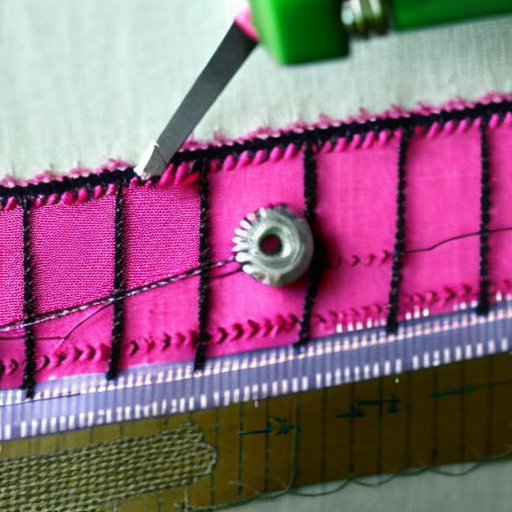Have you ever wondered how the tiny stitches on your clothes or fabrics are formed? In this article, we’ll explore the fascinating world of sewing machine stitches and understand the basic mechanisms that make it all possible.
The Stitching Process
When you activate your sewing machine and start stitching, several steps take place behind the scenes to create that perfect line:
- The needle thread is pulled down into the fabric through the needle.
- The top thread passes through the fabric layers and catches a loop of the bobbin thread from the bottom side.
- The needle thread and bobbin thread intertwine, creating a secure and durable stitch.
- The sewing machine’s feed mechanism moves the fabric forward, allowing the process to continue, forming a continuous line of stitches.
Types of Stitches
Sewing machines offer different types of stitches to accommodate various sewing needs:
- Straight stitch: This stitch is commonly used for basic sewing tasks. It forms a simple, straight line.
- Zigzag stitch: The zigzag stitch creates a back and forth pattern, providing flexibility and preventing fraying.
- Buttonhole stitch: As the name suggests, this stitch is designed specifically for creating buttonholes, ensuring a neat and secure finish.
- Blind hem stitch: This stitch is ideal for creating nearly invisible hems, commonly used in garments.
- Overlock stitch: Also known as a serger stitch, it trims the fabric edge while stitching, creating a neat and professional look.
Adjusting Stitch Length and Width
Most sewing machines allow you to adjust the stitch length and width to cater to your specific needs:
Stitch Length: This determines how far apart each stitch is. Increasing the stitch length results in longer stitches, while decreasing it creates shorter stitches.
Stitch Width: This applies to stitches that move from side to side, such as the zigzag stitch. Adjusting the stitch width changes the width of the zigzag pattern.
Common Stitching Techniques
Mastering different stitching techniques helps achieve professional-looking results:
- Backstitching: Sewing a few stitches in reverse at the beginning and end of a seam to secure and prevent unraveling.
- Topstitching: Stitching near the edges or on top of the fabric for decorative purposes or to accentuate seams.
- Gathering: Creating small, controlled folds along a fabric edge, ideal for adding volume or creating ruffles.
- Staystitching: A row of stitches placed within the seam allowance to stabilize fabric and prevent stretching.




